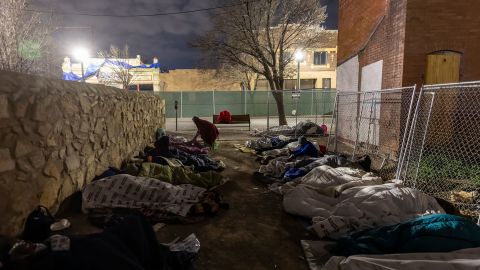
Rio Grande Valley, Texas
CNN
—
Border authorities in the Rio Grande Valley have encountered between 900 and 1,200 migrants daily during the past two weeks, according to a federal law enforcement source familiar with daily operations in South Texas.
These types of numbers are reminiscent of the 2019 surge, when agents encountered at least 1,000 migrants a day, the source said.
The surge in migrants comes as the pandemic Trump-era rule known as Title 42 is scheduled to lift on December 21. The policy allows allows border agents to swiftly return migrants to Mexico.
The termination of the policy is expected to lead to an increase in border crossings since authorities will no longer be able to quickly expel them as has been done since March 2020.
Authorities drop off hundreds of migrants at respite centers
Federal agencies in the Rio Grande Valley are also receiving at least 200 additional migrants who are arriving by plane or by bus from other border patrol sectors, like Del Rio and Laredo, according to the same law enforcement source.
The federal government’s process of moving migrants out of areas that are at capacity and to areas with room for processing is called “decompression.”
Two prominent non-profits in South Texas say border authorities are currently dropping off between 600 and 750 migrants at the respite centers they run in the Rio Grande Valley.
Between 300 and 400 of those migrants are being dropped off near the Greyhound bus station in Brownsville, Texas, according to Sergio Cordoba, a board member and co-founder of the non-profit Team Brownsville.
Cordoba said some of the migrants he has talked to were headed to New York, Chicago, Florida, Dallas, and Denver.
Federal authorities are dropping off between 300 and 350 migrants daily at a McAllen respite center run by Catholic Charities, according to the group’s executive director Sister Norma Pimentel.
“I foresee great numbers,” Pimentel said about the scheduled lift of Title 42.
Cordoba says that most migrants have been able to take busses or planes out of the Brownsville area the same day. Cordoba recalled that during the 2019 migrant surge the Greyhound bus station added more routes to help migrants get to their final destinations in a timely manner.
Mario Garcia, a supervisor at the Greyhound Bus Station in Brownsville told CNN by phone that the bus station is considering adding more routes next week to accommodate the holiday rush and the expected increase of migrant arrivals.
Thousands of migrants await the end of Title 42 in Mexico
In the six-pillar plan issued by the Department of Homeland Security last week, increasing transportation resources, like flights and buses, was part of plan leading up to the lifting of Title 42.
The plan, outlined in a seven-page document, also said the surge of resources to the southern border includes the hiring of nearly 1,000 Border Patrol processing coordinators and adding 2,500 contractors and personnel from government agencies – which allows federal agents to focus on field law enforcement duties.
As the end of Title 42 nears, about 10,000 migrants could be waiting in Matamoros and Reynosa, two Mexican cities across the border from the Rio Grande Valley of south Texas.

About 8,000 of those migrants could be waiting in Reynosa, including 4,000 who are staying in two shelters and an estimated 4,000 in other encampments and the surrounding areas, according to Pastor Hector Silva, who runs the shelters and has been welcoming migrants in Reynosa for a quarter century.
About 55 miles east of Reynosa, in Matamoros, at least 2,000 migrants are waiting for the lifting of Title 42, according to Glady Edith Cañas, the director of the non-profit “Ayudándoles a Triunfar” – which means “Helping them Succeed” in Spanish. Cañas says she’s been helping migrants on the border for about 11 years.
Cañas says the migrants – who are mostly from Venezuela and Haiti – are living on the streets, in abandoned homes and on sidewalks. She describes a chaotic scene where mothers can be seen with hungry and sick children.
“They’re hysterical,” Cañas said about the state of mind of some of the migrants who are waiting for Title 42 to lift. “They feel desperate.”
The temperature of the desperation among migrants in Matamoros is exacerbated by the lack of information they are getting from immigration authorities regarding the lifting of Title 42 on Wednesday, Cañas said. She says that organizations like hers could help bring down the temperature by passing along information to migrants, but that she has not been provided any official details by authorities.
CNN’s Amir Vera, Priscilla Alvarez and Phil Mattingly contributed to this report.


